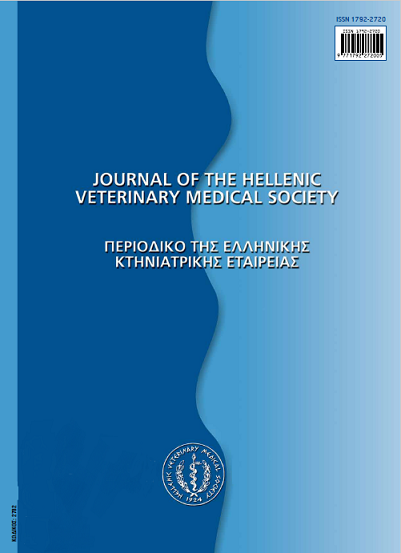Σύγχρονες απόψεις πάνω στην ανοσοπαθογένεια της ομάδας της πέμφιγας στο σκύλο

Περίληψη
Τα αυτοάνοσα νοσήματα της επιδερμίδας στο σκύλο δημιουργούνται από την ενεργοποίηση του ανοσοποιητικού συστήματος απέναντι σε αυτοαντιγόνα, που αποτελούν δομικά συστατικά των συνδέσεων μεταξύ των κερατινοκυττάρων. Τελικό αποτέλεσμα είναι η πρόκληση ακανθόλυσης που χαρακτηρίζει τις δερματοπάθειες αυτές. Με την ανασκόπηση αυτή δίδονται λεπτομέρειες πάνω στην ανοσοπαθογένεια καθεμιάς από τις πέμφιγες και τους μηχανισμούς που διέπουν την ακανθόλυση. Στα αυτοάνοσα νοσήματα της επιδερμίδας περιλαμβάνονται η φυλλώδης, η κοινή, η πανεπιδερμική φλυκταινώδης, η ερυθηματώδης, η παρανεοπλασματική και η φαρμακευτική πέμφιγα. Οι σύγχρονες ανοσοπαθολογοανατομικές και μοριακές τεχνικές έχουν συμβάλλει σημαντικά στην κατανόηση της παθογένειας των δερματοπαθειών της ομάδας της πέμφιγας, ενώ παράλληλα αυξάνουν την προοπτική για αποτελεσματικότερα θεραπευτικά σχήματα με βάση τα κλινικά και μοριακά χαρακτηριστικά τους.
Λεπτομέρειες άρθρου
- Πώς να δημιουργήσετε Αναφορές
-
PAPADOGIANNAKIS (E. Ι. ΠΑΠΑΔΟΓΙΑΝΝΑΚΗΣ) E. M. (2017). Σύγχρονες απόψεις πάνω στην ανοσοπαθογένεια της ομάδας της πέμφιγας στο σκύλο. Περιοδικό της Ελληνικής Κτηνιατρικής Εταιρείας, 55(4), 319–323. https://doi.org/10.12681/jhvms.15128
- Τεύχος
- Τόμ. 55 Αρ. 4 (2004)
- Ενότητα
- Review Articles
Οι συγγραφείς των άρθρων που δημοσιεύονται στο περιοδικό διατηρούν τα δικαιώματα πνευματικής ιδιοκτησίας επί των άρθρων τους, δίνοντας στο περιοδικό το δικαίωμα της πρώτης δημοσίευσης.
Άρθρα που δημοσιεύονται στο περιοδικό διατίθενται με άδεια Creative Commons 4.0 Non Commercial και σύμφωνα με την άδεια μπορούν να χρησιμοποιούνται ελεύθερα, με αναφορά στο/στη συγγραφέα και στην πρώτη δημοσίευση για μη κερδοσκοπικούς σκοπούς.
Οι συγγραφείς μπορούν να καταθέσουν το άρθρο σε ιδρυματικό ή άλλο αποθετήριο ή/και να το δημοσιεύσουν σε άλλη έκδοση, με υποχρεωτική την αναφορά πρώτης δημοσίευσης στο J Hellenic Vet Med Soc
Οι συγγραφείς ενθαρρύνονται να καταθέσουν σε αποθετήριο ή να δημοσιεύσουν την εργασία τους στο διαδίκτυο πριν ή κατά τη διαδικασία υποβολής και αξιολόγησής της.


